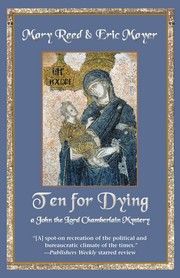


1481757 Curiosities served
Ring-a-ding-ding. God save the king!
Previous Entry :: Next Entry
Read/Post Comments (4)
Mary R
For some people today is important for reasons other than my sudden appearance in the blogosphere. To explain why, I pose the question: why do so many pub signs depict a man peeking through a thickly leafed oak tree?
Many say it's a folk memory of the Green Man and pagan worship of trees, but that's not the whole story. The plethora of Royal Oak pubs is just as much Oliver Cromwell's fault.
How it came about was in this wise. At the close of the English Civil War Charles II and his largely Scottish army were defeated at the Battle of Worcester on 3 September l65l. Such Scots as were taken as prisoners of war were sent to America to work as forced labourers, thus infusing gallant blood into the melting pot, while Charles became a hunted man with a price on his head and execution the fate of anyone caught helping him.
During his adventures as he fled to freedom in France, at one point Charles and a faithful follower hid in a huge oak in the grounds of Boscobel House, Shropshire, while Parliamentary troops on his track beat around the surrounding thick woods. As history shows, Charles reached the continent safely, to eventually return as king, making a triumphal entry into London on 29th May l660, which was also his birthday.
The date thus became one to celebrate Charles' restoration. It was customary to garland houses and decorate streets with oak boughs, bunting, strings of birds eggs, and gilded oakapples. Publicans vied for the biggest oak bough brought back by youths who were off to local woods with saws well before dawn. Hunting horns were blown all day long, meals and merriment ruled, and oakapples or sprays of oak leaves were worn on the chest. Alas for those not sporting such symbols of loyalty to the crown, for the penalty for not displaying them was being rolled in the muck or having rear ends pinched by children. Charles' statues were decorated with oak leaves and railway engines also sported a bough on the day. Parliament got in on the act too, quickly passing a law mandating an annual church service of thanksgiving for the restoration of the king be held each 29th May, a requirement not removed from the Book of Common Prayer until l859.
While most of these customs have fallen by the wayside, some are still kept. For example, on Oakapple Day the famous scarlet-coated pensioners at the Royal Hospital in Chelsea receive a special ration of beer and a member of royalty or similar high personage inspects the old gents' parade honouring Charles II, founder of the institution.
Although not directly connected with restoration celebrations, many visitors enjoy a custom in Great Wishford, Wiltshire, on 29th May, when villagers assert rights dating from the early l600s to gather firewood in perpetuity from nearby Grovely Wood. The village is decorated as in the old days and residents carrying oak boughs and chanting "Grovely, Grovely, and all Grovely" go in procession to nearby Salisbury, where they dance in the cathedral close and a fete is held.
Here at Casa Maywrite the day has already been observed by a spirited declaration this afternoon of the traditional rhyme for the day:
The 29th of May is Oakapple DayHow fortunate Charles was to have met loyal subjects willing to help him avoid being captured, doubtless to suffer the same fate as his father -- the very thought of which might well make today's ardent royalists feel the need for a stiff drink.
Ring-a-ding-ding
God save the king!
At the nearest Royal Oak pub, of course.
Read/Post Comments (4)
Previous Entry :: Next Entry
Back to Top

